Abstract
Pigeons chose between equivalent two-component mixed and multiple terminal-link schedules of reinforcement in the concurrent-chains procedure. The pigeons preferred the multiple schedule over the mixed when the components of the compound schedules were differentiated in terms of density of reinforcement, but the pigeons were indifferent when the components were differentiated in terms of number of reinforcers per cycle. Taken together, these results indicate that a local variable, the interval to the first reinforcer, but not a molar variable, the number of reinforcers, was sufficient to differentiate the components and thereby evoke preference.
Keywords: choice, concurrent chains, multiple schedules, number of reinforcers, key peck, pigeons
Full text
PDF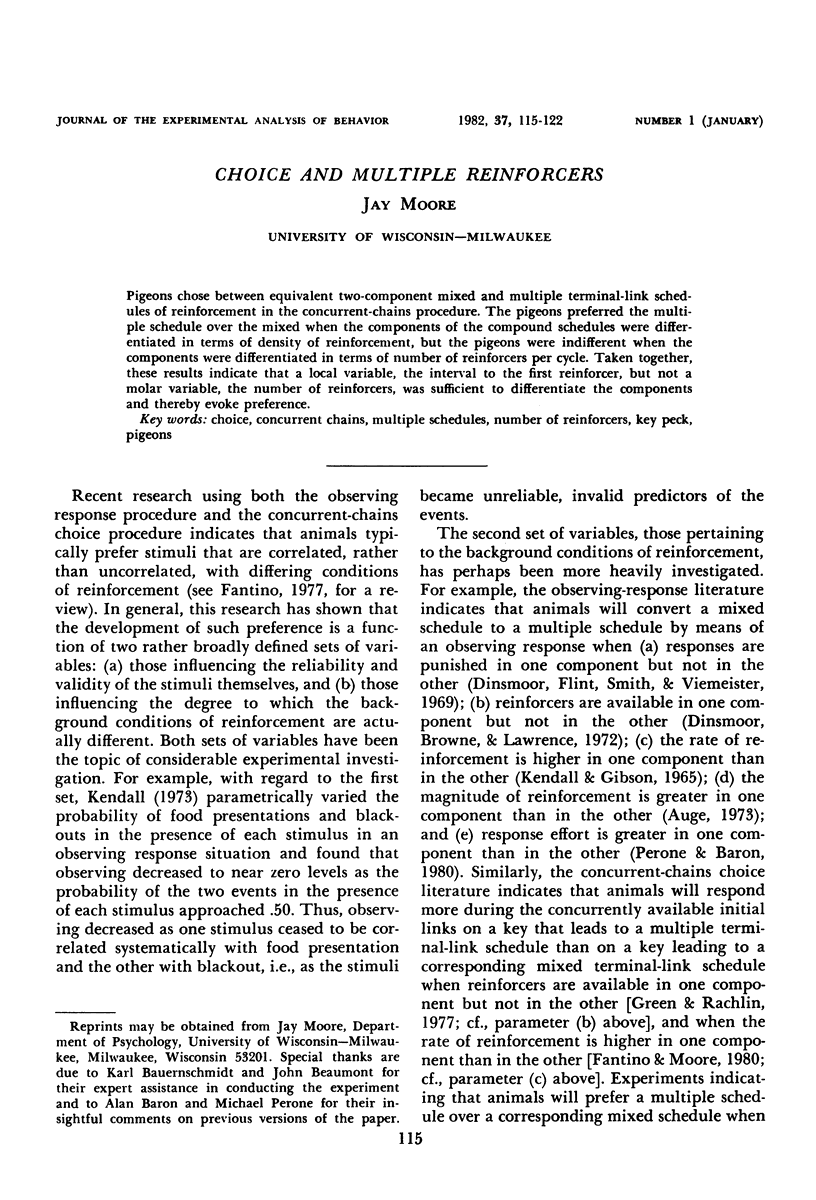
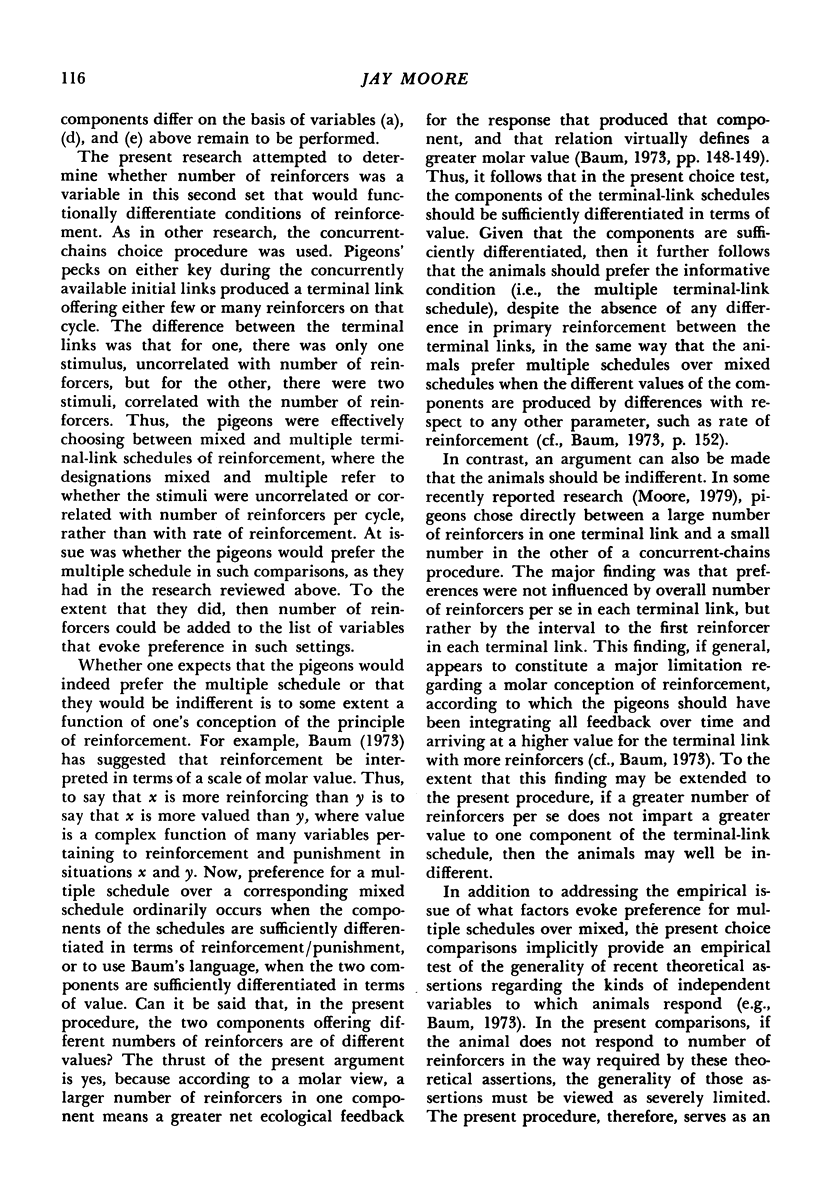
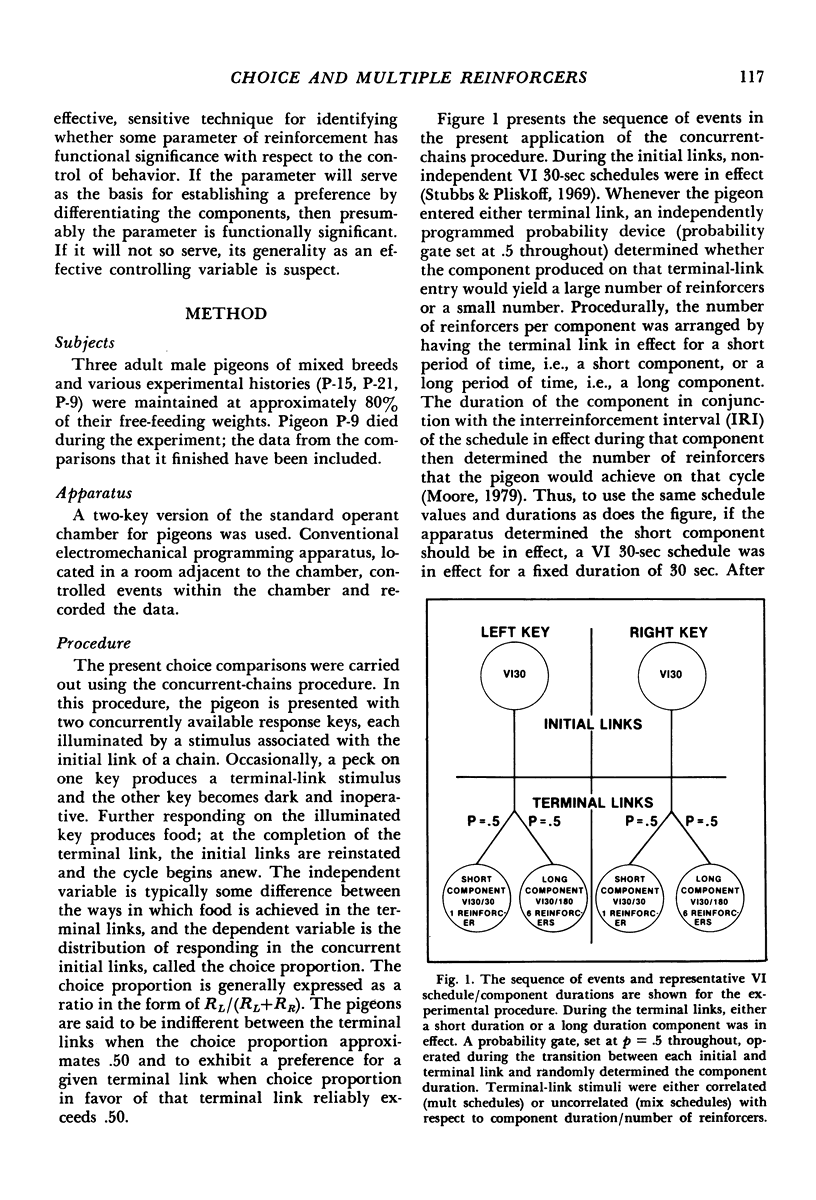
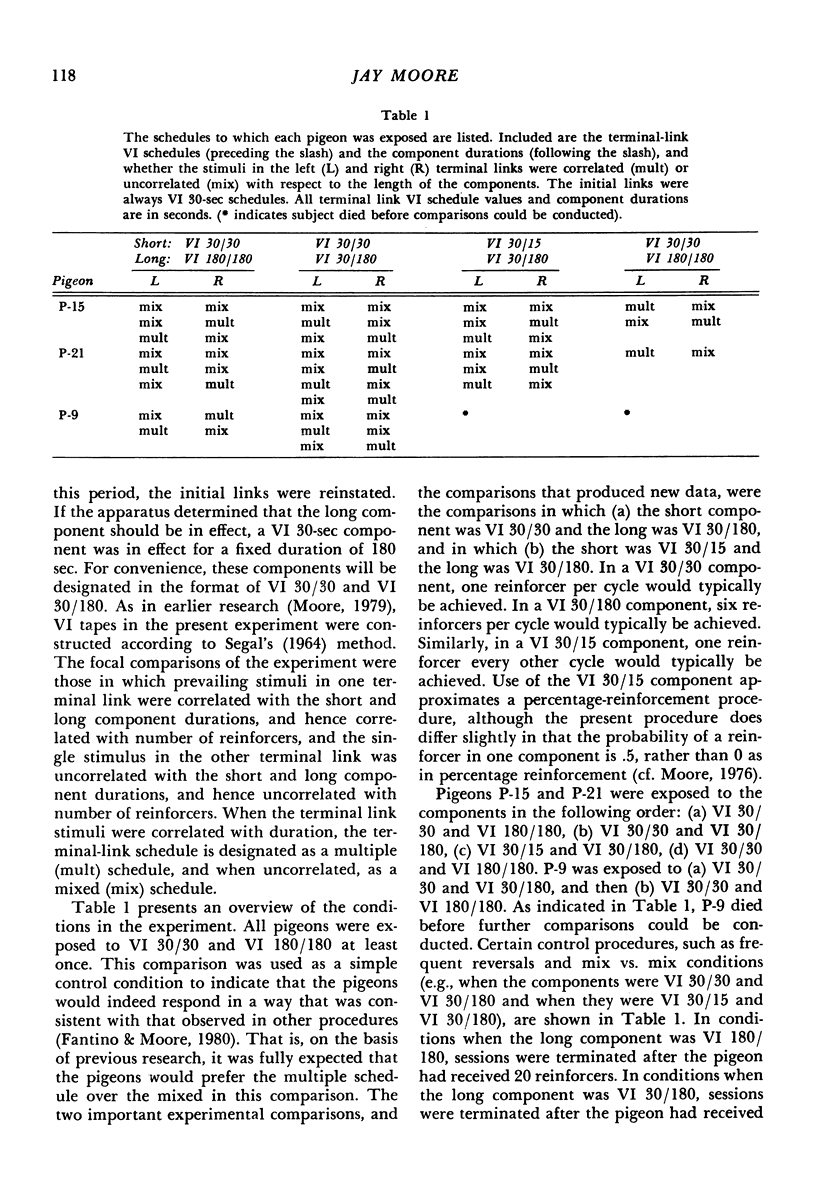
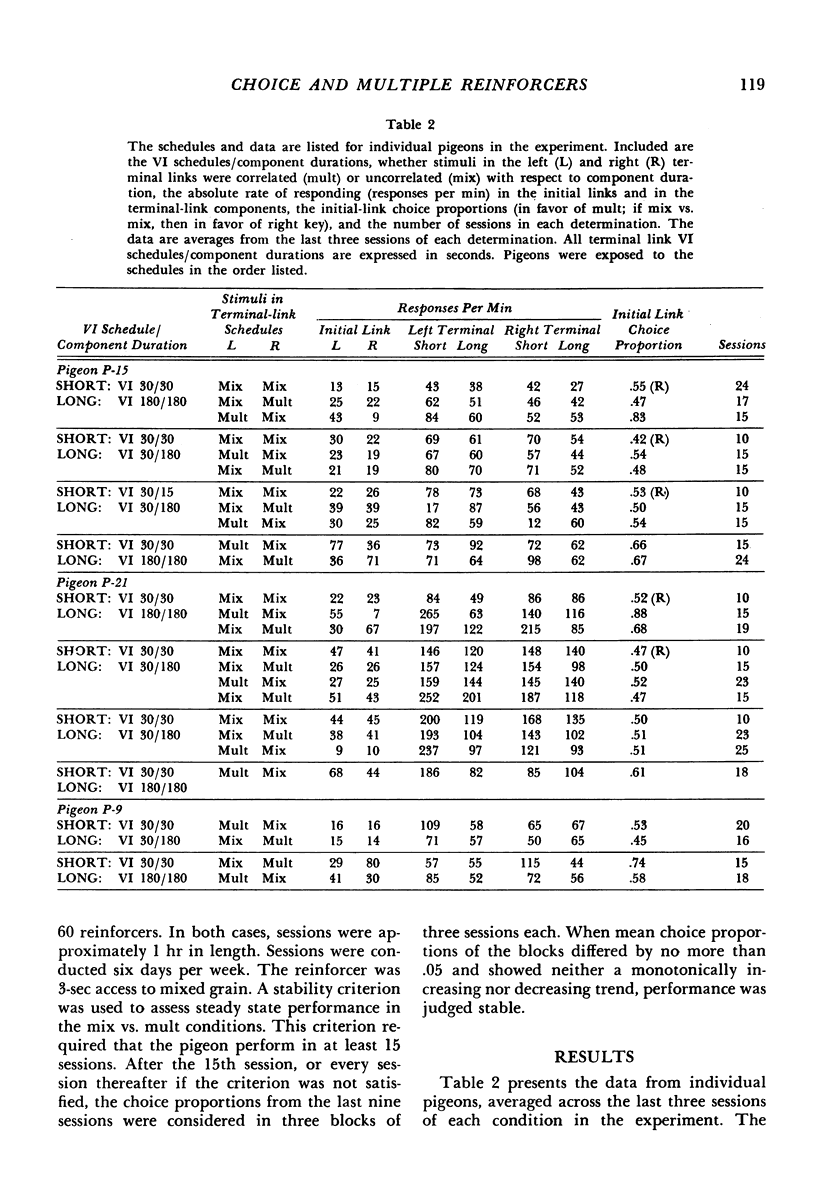
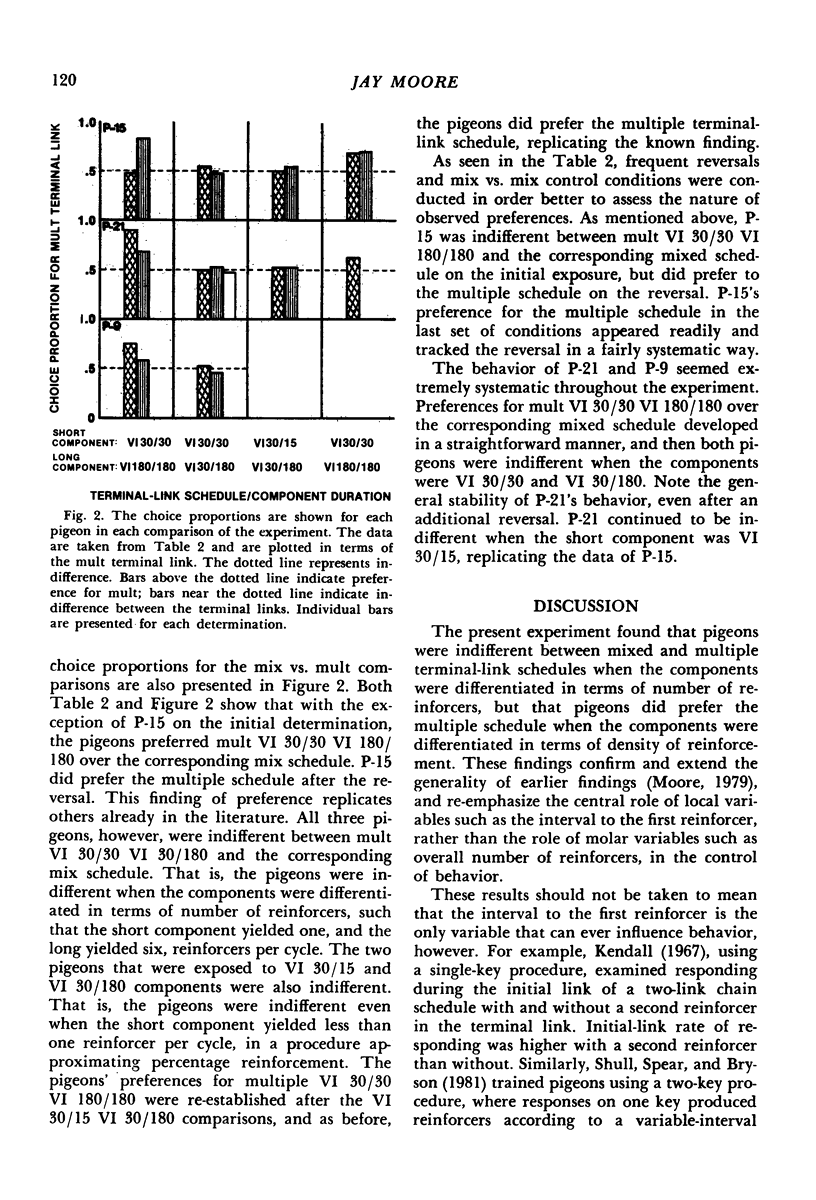
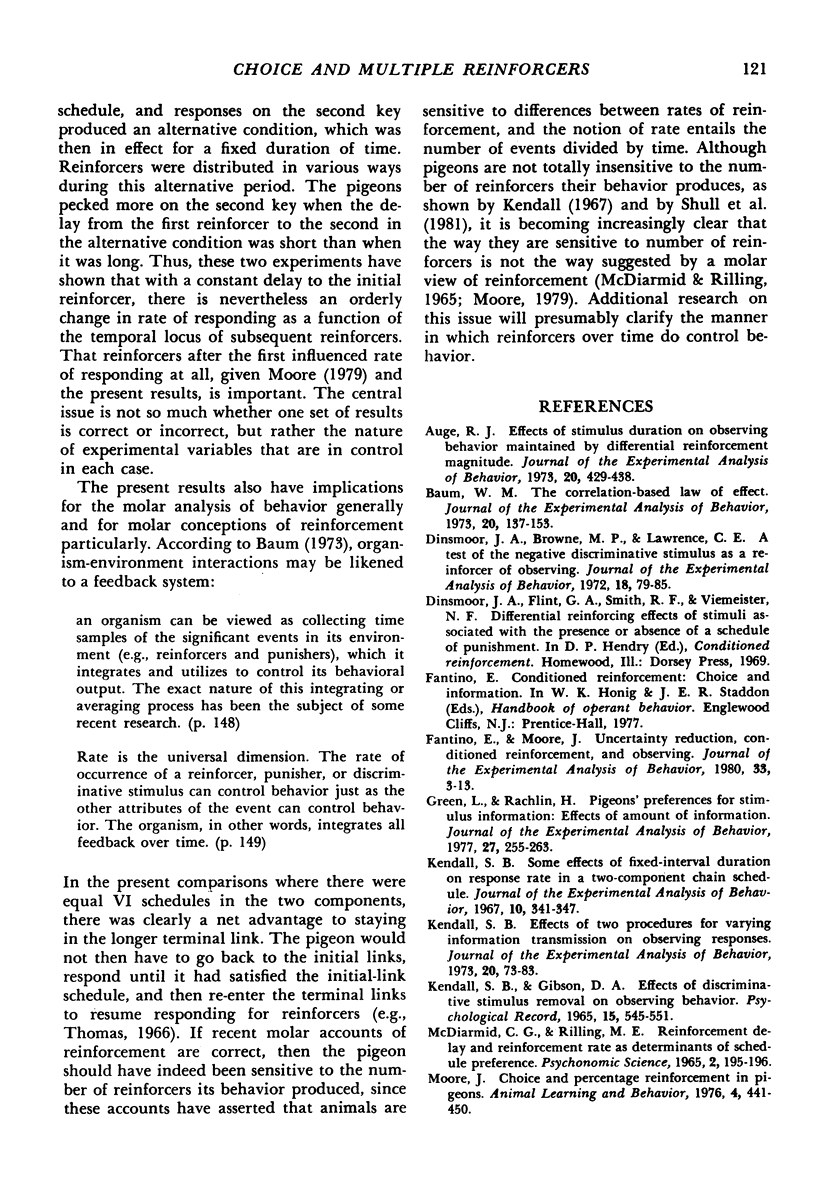
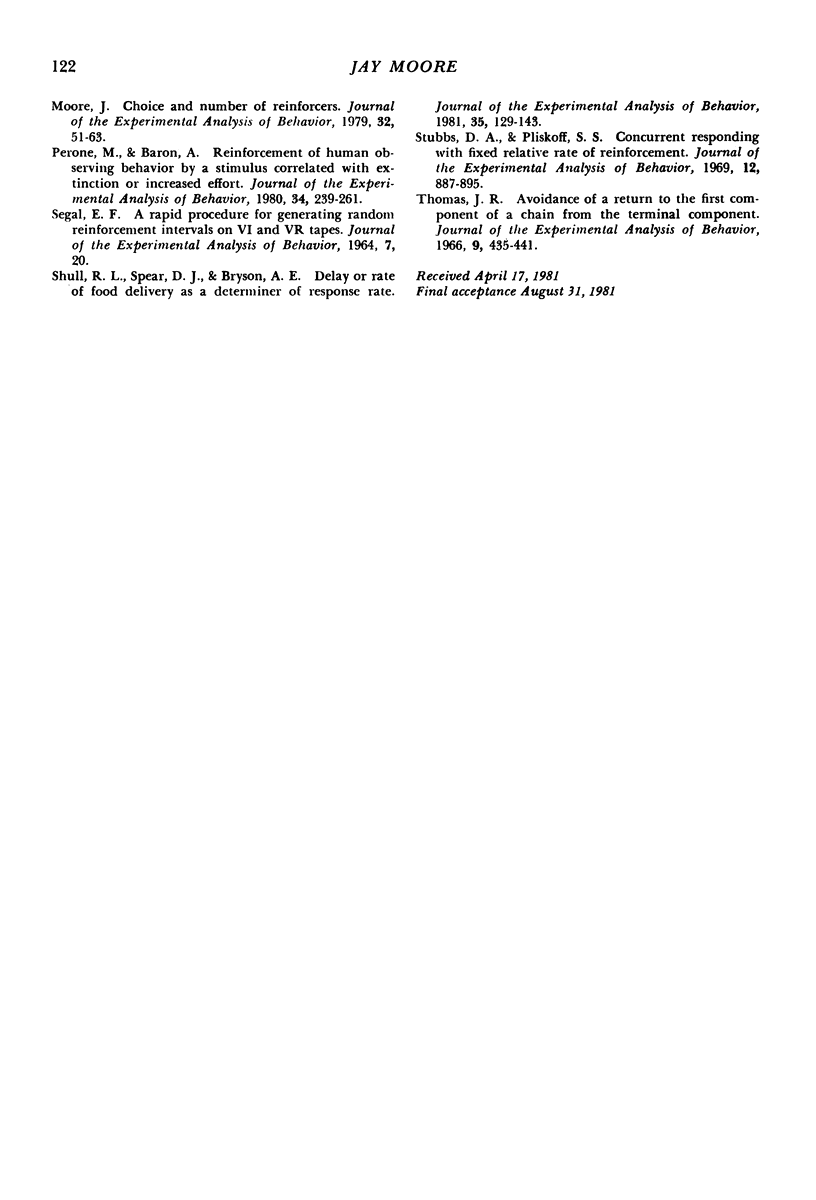
Selected References
These references are in PubMed. This may not be the complete list of references from this article.
- Auge R. J. Effects of stimulus duration on observing behavior maintained by differential reinforcement magnitude. J Exp Anal Behav. 1973 Nov;20(3):429–438. doi: 10.1901/jeab.1973.20-429. [DOI] [PMC free article] [PubMed] [Google Scholar]
- Baum W. M. The correlation-based law of effect. J Exp Anal Behav. 1973 Jul;20(1):137–153. doi: 10.1901/jeab.1973.20-137. [DOI] [PMC free article] [PubMed] [Google Scholar]
- Dinsmoor J. A., Browne M. P., Lawrence C. E. A test of the negative discriminative stimulus as a reinforcer of observing. J Exp Anal Behav. 1972 Jul;18(1):79–85. doi: 10.1901/jeab.1972.18-79. [DOI] [PMC free article] [PubMed] [Google Scholar]
- Fantino E., Moore J. Uncertainty reduction, conditioned reinforcement, and observing. J Exp Anal Behav. 1980 Jan;33(1):3–13. doi: 10.1901/jeab.1980.33-3. [DOI] [PMC free article] [PubMed] [Google Scholar]
- Green L., Rachlin H. Pigeons' preferences for stimulus information: effects of amount of information. J Exp Anal Behav. 1977 Mar;27(2):255–263. doi: 10.1901/jeab.1977.27-255. [DOI] [PMC free article] [PubMed] [Google Scholar]
- Kendall S. B. Effects of two procedures for varying information transmission on observing responses. J Exp Anal Behav. 1973 Jul;20(1):73–83. doi: 10.1901/jeab.1973.20-73. [DOI] [PMC free article] [PubMed] [Google Scholar]
- Kendall S. B. Some effects of fixed-interval duration on response rate in a two-component chain schedule. J Exp Anal Behav. 1967 Jul;10(4):341–347. doi: 10.1901/jeab.1967.10-341. [DOI] [PMC free article] [PubMed] [Google Scholar]
- Moore J. Choice and number of reinforcers. J Exp Anal Behav. 1979 Jul;32(1):51–63. doi: 10.1901/jeab.1979.32-51. [DOI] [PMC free article] [PubMed] [Google Scholar]
- Perone M., Baron A. Reinforcement of human observing behavior by a stimulue correlated with extinction or increased effort. J Exp Anal Behav. 1980 Nov;34(3):239–261. doi: 10.1901/jeab.1980.34-239. [DOI] [PMC free article] [PubMed] [Google Scholar]
- SEGAL E. F. A RAPID PROCEDURE FOR GENERATING RANDOM REINFORCEMENT INTERVALS ON VI AND VR TAPES. J Exp Anal Behav. 1964 Jan;7:20–20. doi: 10.1901/jeab.1964.7-20. [DOI] [PMC free article] [PubMed] [Google Scholar]
- Shull R. L., Spear D. J., Bryson A. E. Delay or rate of food delivery as determiners of response rate. J Exp Anal Behav. 1981 Mar;35(2):129–143. doi: 10.1901/jeab.1981.35-129. [DOI] [PMC free article] [PubMed] [Google Scholar]
- Stubbs D. A., Pliskoff S. S. Concurrent responding with fixed relative rate of reinforcement. J Exp Anal Behav. 1969 Nov;12(6):887–895. doi: 10.1901/jeab.1969.12-887. [DOI] [PMC free article] [PubMed] [Google Scholar]
- Thomas J. R. Avoidance of a return to the first component of a chain from the terminal component. J Exp Anal Behav. 1966 Jul;9(4):435–441. doi: 10.1901/jeab.1966.9-435. [DOI] [PMC free article] [PubMed] [Google Scholar]


